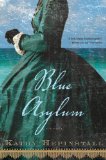Summary | Excerpt | Reviews | Beyond the book | Read-Alikes | Genres & Themes | Author Bio

A Novel
by Adam FouldsAn episodic novel that revolves around a Victorian mental institution's residents and neighbors, The Quickening Maze follows Dr. Allen and his family, patients, and staff from the autumn of 1837 to the spring of 1838. Though Adam Foulds draws from real personages - including John Clare and Alfred Tennyson before his tenure as Poet Laureate - it is not his reimagining of the Victorian past that ultimately stands out as much as the threading of multiple narratives and his tenacious characters, all of which elevate an otherwise competent historical fiction into a more complex study of misplaced desires. He creates firm distinctions between desires that are possible and those that are delusions, juxtaposing normalcy with madness to highlight how all these various men and women approach their problems.
Portraits of weddings, fireside conversations, and other scenes of domesticity appear alongside depictions of mental illness, violence, and a visceral rurality. Whether Foulds details the administering of an enema, the butchering of a deer, or the repeated rape of a patient by an attendant, High Beach emerges as a forested enclave where the relatively tame concerns of the Allen household must coexist within the same bounds as the earthy and the profane.
Foulds does not delve into the inner workings of the sanitarium, nor does he use it as a platform for commentary on the psychological theories and medical practices of the time. It remains a shadowy place inhabited by a spectrum of patients - from a man who is not mad at all, but who has been confined by his family to prevent an undesirable marriage, to the more severe residents of Leopard Hill House, who require more constant supervision. Between these extremes are patients with privileges, who may occasionally wander the grounds on their own.
Although Dr. Allen's family resides within walking distance of High Beach, their involvement seems limited to greeting new arrivals, shared church services, or chance meetings, and readers are not told whether his wife and daughters realize the extent of the cruelty that occurs within its walls. In the midst of these commonplace moments, John Clare roams the woods slipping between lucidity and increasingly darker fantasies. Readers perceive High Beach from varied angles, and must draw their own parallels between the characters' respective paths.
Glimpses of an everyday life often prove more intriguing than explorations of madness. In a revealing moment, Hannah (upon visiting her newly married sister and brother-in-law) muses that Dora and her husband "…were a new generation, in a new home. There they would be safe from her parents' extravagance and failures and would never meet another patient." She realizes that escape comes in the form of creating one's own household, and of loving "…the life that was possible: that also was a freedom, perhaps the only freedom." It is one of the rare hints in the novel that suggests how profound an effect the environment has had on the family's daughters, and that they may have known more about the problems at High Beach than they had initially let on. As questions arise regarding what it means to be hemmed in by the expectations of others, and where real autonomy lies, the divide between those who are inside the asylum and those who are outside begins to increase.
The Quickening Maze, as its title suggests, is at times enigmatic, particularly in the passages which describe the mental meanderings of several patients. Still, it presents a fine tapestry, affording readers a broad view of an ordinary family facing rare circumstances. Foulds transforms relatively obscure material into an intelligent exploration of sanity, madness, and, perhaps most unexpectedly, of the ways in which love defines and confirms each character's sense of purpose.
![]() This review
first ran in the September 8, 2010
issue of BookBrowse Recommends.
This review
first ran in the September 8, 2010
issue of BookBrowse Recommends.

If you liked The Quickening Maze, try these:

by Katherine Arden
Published 2025
During the Great War, a combat nurse searches for her brother, believed dead in the trenches despite eerie signs that suggest otherwise, in this hauntingly beautiful historical novel with a speculative twist, from the New York Times bestselling author of The Bear and the Nightingale.

by Kathy Hepinstall
Published 2013
In the midst of the American Civil War, a southern plantation owner's wife is arrested by her husband and declared insane for interfering with his slaves. She is sent to an island mental asylum to come to terms with her wrongdoing, but instead finds love and escape with a war-haunted Confederate soldier.
Your guide toexceptional books
BookBrowse seeks out and recommends the best in contemporary fiction and nonfiction—books that not only engage and entertain but also deepen our understanding of ourselves and the world around us.